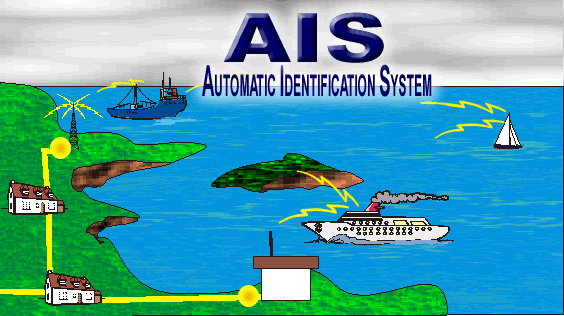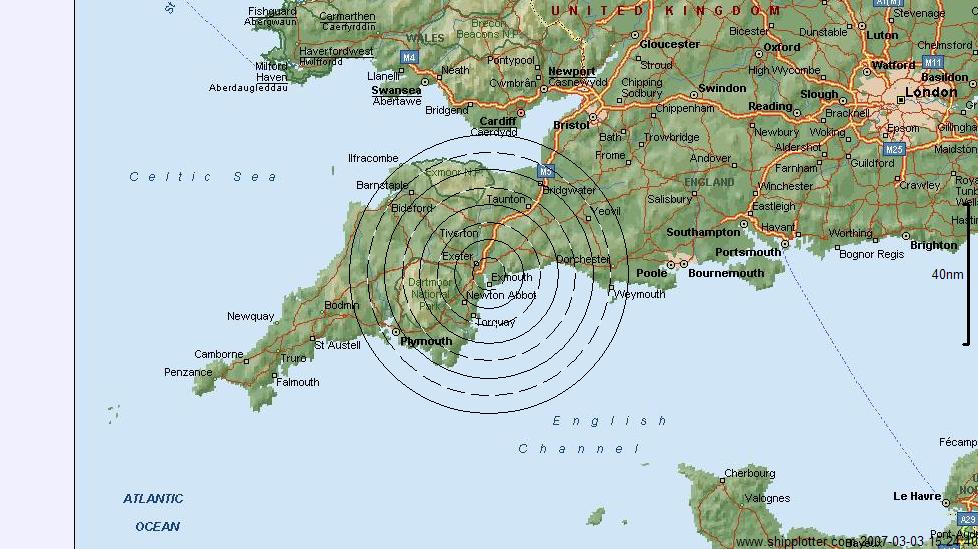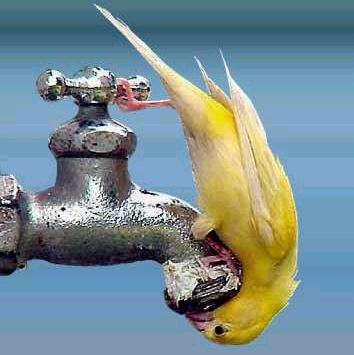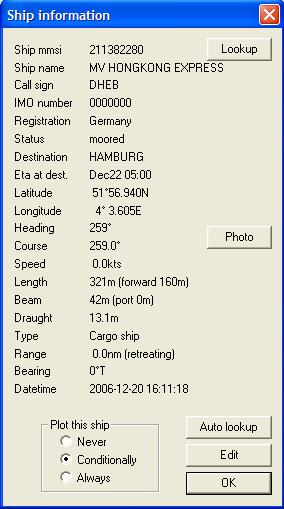|

Shipplotter
Automatic
Identification System (AIS)
In recent years Europe, particularly along the
Atlantic coastline, has seen a number of disastrous accidents involving oil
tankers (Torrey Canyon, Amoco Cadiz, Tanio, Braer, Aegean Sea, Erika and
Prestige). These have had catastrophic economic and environmental consequences.
Because of the volume of traffic and the resultant high risk to shipping in
European waters, national maritime agencies have introduced ship routing
systems, approved by the International Maritime Organization (IMO). Improved
ship routing has helped to limit the risk of collision. However, the existing
systems have limited geographical scope and concentrate on the main zones of
traffic convergence without properly covering events that could occur outside
the range of radar or shore-based automatic identification system (AIS) centers.
To meet this demand the Long Range Identification and Tracking (LRIT) system is
under development. Further on more information about the LRIT system is provided.

As specified by IMO, AIS is a broadcast system
operating in the VHF maritime radio band (161.975 Mhz and 1621.025 Mhz) and capable of sending and receiving
ship information such as identity, position, course, speed, ship particulars,
and cargo information to and from other ships and shore. It can handle more
2,000 reports per minute and updates information as often as every two seconds.
A mandatory implementation schedule depends on the type of the vessel (passenger
ships, tankers, 300 gross tonnage vessels, and so forth). The final
installations have occurred at the end of 2004.
In December 2002, the IMO introduced the
International Ship and Port Facility (ISPS) code, as an amendment to the
International Convention for the Safety of Life at Sea (SOLAS) of 1974. IMO also
recommended that measures should be introduced at the earliest opportunity to
provide long-range identification and tracking of SOLAS vessels. The code, which
becomes effective from July 1, 2004, aims to provide defined procedures for
maritime security at the ship/port facility interface. Long Range Identification
and Tracking of incoming vessel traffic and cargo is therefore an important
factor in the assessment of risk and the definition of appropriate security
procedures.
If
This is a live plot of ships
sailing in the English Channel. The date and time stamp are in the lower right
corner of the picture. The picture is refreshed every 60 secons. Notice the
shipping routes being used and also the cross traffic from France to England and
v.v. To get a larger picture please click on the above picture.

For an actual AIS picture of Hook of Holland click on the picture of the thirsty little bird above

Right clicking on a ship on the
map produces a pop-up screen with quite a lot of the ship's essentials. When the
Photo button is clicked a Google search is started for a
picture of the ship.
Some information on the future Long Range
Identification and Tracking (LRIT) system that will be implemented already on and after
31/12/2008.
As specified by IMO, AIS is a broadcast system operating in
the VHF maritime radio band and capable of sending and receiving ship
information such as identity, position, course, speed, ship particulars, and
cargo information to and from other ships and shore. It can handle more 2,000
reports per minute and updates information as often as every two seconds. A
mandatory implementation schedule depends on the type of the vessel (passenger
ships, tankers, 300 gross tonnage vessels, and so forth). The final
installations will occur before end of 2004.
Following the terrorist events on September 11, 2001, fears were expressed
that ships could be used to transport noxious devices or substances, or that
ships could be used themselves as floating bombs.
One obvious solution to the problem is to monitor the progress of vessels at
sea and identify those that might pose a threat. Long Range Identification and
Tracking (LRIT) can do this. Under LRIT, every vessel would regularly transmit,
via satellite, its unique identity (e.g. an Inmarsat C ID), its position
(Latitude/Longitude) and the date and time of the position.

An example of
an Inmarsat C (data only) terminal for shipboard use.
Proposals for a long-range identification and tracking (LRIT) solution for
ships - which would use existing Inmarsat technology and aims to enhance
maritime security - have made significant progress at the 80th session in May,
2005 of the International Maritime Organization (IMO) Maritime Safety Committee
(MSC 80).
The IMO, at the 81st session of the Maritime Safety Committee (MSC 81), 10-19
May 2006, agreed a draft SOLAS Amendment on LRIT, which requires that ships
shall be fitted with LRIT equipment to transmit automatically the information
(ship's ID, position, date/time of position) as follows:
* ships constructed on or after 31/12/2008;
* ships constructed before 31/12/2008 and certified for operations in sea
areas A1, A2 and A3 not later than the 1st survey of the radio installation
after 31 December 2008; and
* ships constructed before 31/12/2008 and certified for operations in sea
areas A1, A2, A3 and A4 not later than the 1st survey of the radio installation
after 1 July 2009. However, these ships shall comply with the provision of
paragraph 2 above whilst they operate within sea areas A1, A2 and A3.
The LRIT equipment on board ships must interface directly to the shipborne
Global Navigation Satellite System (GNSS) equipment, or have an internal
positioning capability.
LRIT requires that the frequency of transmission can be controlled remotely,
without intervention on board; allowing for an increase in LRIT transmission
frequency as security levels change, in order to perhaps observe a particular
vessel or vessels more closely.
At security Level 1 (the lowest level), all passenger vessels on
international voyages, all cargo vessels including high-speed craft over 300
gross tonnes and mobile offshore drilling units must transmit the required LRIT
data every six (6) hours.
If security levels change to 2 or 3, or if a particular vessel or vessels
is/are of more interest, LRIT transmissions and monitoring can be increased
remotely as required, up one LRIT report every 15 minutes.
The Inmarsat technology to make this work efficiently already exists. Indeed,
LRIT data can be provided now, using Inmarsat C, mini-C or D+. The Inmarsat
terminal on the vessel has a built-in global positioning system (GPS) receiver,
which provides the vessel's position. The Inmarsat terminal also has a built-in
unique identity, or ID.
Remote control is already possible today with Inmarsat C, mini-C and D+
MSC 81 agreed to set up an ad hoc Working Group on the Engineering Aspects of
LRIT. This group will meet three times between MSC 81 and MSC 82 (29 November-08
December 2006), with the first meeting 21-23 June in Vancouver. This group will
develop, inter alia, the terrestrial infrastructure requirements for LRIT and
will report back to MSC 82.
| 
